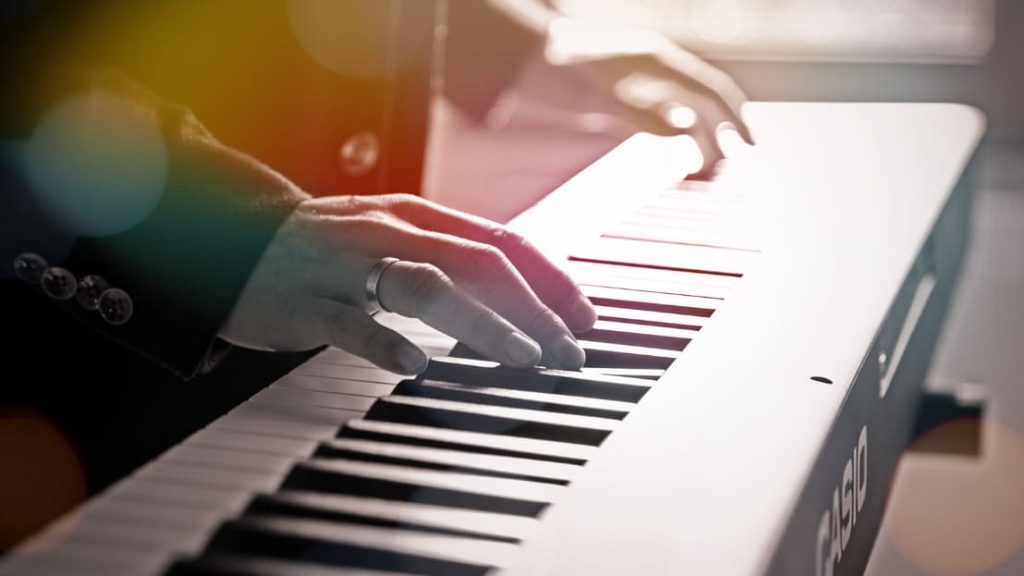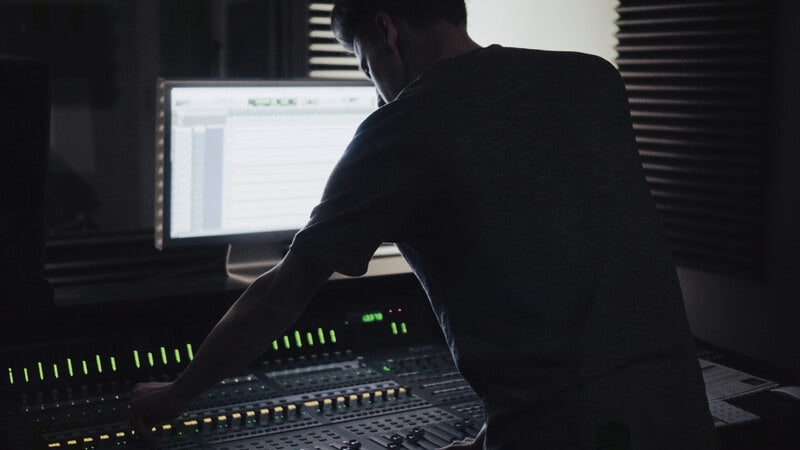If you’re starting from scratch, the biggest secret isn’t talent—it’s a routine you can repeat. In this guide, you’ll learn how to practice piano step by step: what to do first, how to keep sessions short and focused, and how to turn tiny wins into real songs. We’ll keep it simple, practical, and beginner-friendly.
The Mindset Shift: From Long Sessions to Small, Consistent Wins
Most beginners imagine marathon sessions, then skip practice when life gets busy. Flip that script. Ten focused minutes beats an hour of unfocused noodling. When you practice the piano regularly—short, specific, and repeated—you build muscle memory and confidence. The goal is momentum, not perfection.
What “good practice” looks like:
- A fixed start time you can actually keep.
- A clear plan for today’s session.
- One measurable outcome (a bar clean at 70 bpm, or a left-hand pattern memorized).
- A quick reflection at the end: what worked, what to repeat tomorrow.
This is the best way to practice piano when you’re new: fewer decisions, more repetition, steady progress.
Your Setup Matters More Than You Think
-
Keep your keyboard out. If you need five minutes to set up, you’ll talk yourself out of it.
-
Headphones ready. Quiet practice = more practice.
-
A visible timer and a simple notebook. Time boxes keep you honest; notes help you pick up where you left off.
-
Guided feedback helps. A smart keyboard with guided lights and an app that tracks streaks reduces guesswork and speeds up early wins.
The 3-Part Session: Warm-Up, Core, Cool-Down

Every plan here uses a three-part flow so you always know how to practice piano effectively without wasting time.
1) Warm-Up (3–5 minutes)
-
Finger shapes: Slow, connected five-finger patterns (C–G) with even tone.
-
Rhythm feel: Clap or tap the rhythm of today’s piece; count out loud.
-
Sound check: A few gentle scales or simple broken chords, pianissimo to mezzo-forte.
2) Core Work (12–30 minutes)
-
Micro-loops: Tackle a two-bar fragment. Hands separate first, then together slowly.
-
Left hand love: Give bass patterns their own time; they anchor everything.
-
Tempo ladder: Nail it at a slow speed (e.g., 60 bpm), then climb in small steps (64, 68, 72…).
-
Problem bar clinic: Isolate, fix, reinsert into the phrase. Don’t just restart the song.
3) Cool-Down (2–5 minutes)
-
Play-through at comfort speed or
-
One musical detail: voicing a melody, smoother legato, softer dynamics.
A Simple Framework for Learning Any Song

When beginners ask how to practice piano, what they really want is a repeatable way to learn songs. Use this loop:
-
Listen once and mark the structure (intro, verse, chorus).
-
Highlight two hardest spots. That’s where your time goes.
-
Hands separate, then together—slow enough that you never miss.
-
Count aloud (or use a metronome). Keep timing honest; speed later.
-
Link fragments: two bars → four → eight.
-
Daily polish: add dynamics, pedaling, and cleaner transitions.
-
Record a short clip once a week; hearing yourself accelerates fixes.
Timing & Tempo: Make the Metronome Your Friend
A metronome isn’t punishment; it’s a mirror. Beginners often rush the easy bits and freeze on the hard ones. To practice the piano with less frustration:
-
Start slow enough to play perfectly three times in a row. That’s your real starting tempo.
-
Use “half-tempo” runs to hard-wire accuracy before speed.
-
Try “pulse + no click”: 2 bars with metronome, 2 bars without, then back on—can you land together?
Hands Together Without the Meltdown
Putting hands together is where many beginners stall. Use a bridge:
-
Right hand only at a comfortable tempo.
-
Left hand only at the same tempo.
-
Together at half speed, with stops between chords if needed.
-
Remove the stops and add phrasing once the grid feels stable.
-
Shorten the loop: if a bar is messy, isolate just the beat that breaks.
Three Ready-to-Use Daily Routines
20-Minute Routine (busy days)
-
Warm-Up: 3 minutes of slow five-finger and rhythm claps.
-
Core: 12 minutes on one tiny fragment (HS → HT) using a tempo ladder.
-
Cool-Down: 5 minutes of a comfortable tune or easy improvisation.
30-Minute Routine (standard day)
-
Warm-Up: 5 minutes—scale or broken-chord patterns, crescendo–diminuendo.
-
Core A: 12 minutes on your hardest two bars (hands separate).
-
Core B: 8 minutes hands together, super slow, lock timing.
-
Cool-Down: 5 minutes full phrase at comfort speed.
45-Minute Routine (growth day)
-
Warm-Up: 5 minutes technique + rhythm.
-
Core A: 12 minutes new fragment.
-
Core B: 12 minutes phrase linking and transitions.
-
Core C: 10 minutes musicality: dynamics, voicing, pedal.
-
Cool-Down: 6 minutes record a take, note one fix for tomorrow.
Building Technique Without Getting Bored

-
Even tone: aim for identical volume across fingers while playing simple patterns.
-
Legato control: connect notes like speech; feel the “weight transfer” finger to finger.
-
Wrist & arm: relaxed, floating, no locked joints. Short breaks beat long strain.
-
Dynamics: practice the same bar at p, mp, mf; the contrast teaches control.
Motivation That Lasts Longer Than Week One
To keep practicing piano past the first burst of excitement:
-
Track streaks with a paper calendar or app. Don’t break the chain.
-
Micro-goals: “Bar 9 clean at 72 bpm” is specific and winnable.
-
Repertoire you love: learn songs you actually listen to.
-
Share tiny clips with a friend or community for gentle accountability.
If you like visual guidance and built-in lessons, a compact smart keyboard can keep you moving by lighting the next note and scoring accuracy (here’s one example of a modular, LED-guided board you can grow with as you improve: smart keyboard with guided lights).
Common Beginner Mistakes (and How to Avoid Them)
-
Practicing only from the start. Loop the hard bar, not the whole song.
-
Going too fast too soon. Perfect three slow reps before touching the tempo.
-
Skipping the left hand. Give it dedicated time; it’s the engine.
-
Practicing tired. Short and fresh beats long and foggy.
-
No plan. Write today’s target tempo or measure numbers before you start.
A One-Week Starter Plan
Day 1: Set up your space; pick a short piece you genuinely like. Hands separate at slow tempo.
Day 2: Right hand—clean tone and even rhythm; add metronome late in the session.
Day 3: Left hand—pattern focus; keep it steady and soft.
Day 4: Two bars together, half speed; lock in transitions.
Day 5: Link four bars; add dynamics and phrasing.
Day 6: First full pass at comfort tempo; record a 20-second clip.
Day 7: Review, celebrate a tiny win, and write the first goal for next week.
Frequently Asked Questions
How long should a beginner practice each day?
Start with 15–20 minutes, five days a week. Consistency beats marathon sessions.
Is it okay to learn without reading music at first?
Yes. Many beginners learn songs by ear or with visual guidance. Add notation gradually.
Do I need weighted keys right away?
Nice to have, not mandatory at day one. Focus on routine; upgrade when your pieces demand it.
What’s the fastest way to fix mistakes?
Shrink the problem. Loop a beat or half-bar at slow tempo until it feels predictable, then reinsert it.
How do I know if I’m improving?
Record short clips weekly at the same tempo; your ears will catch smoother timing and cleaner tone.
Final Thoughts
Learning how to practice piano is about building a routine that fits real life. Keep the instrument ready, keep sessions small and specific, and celebrate tiny wins. When today’s target is clear—a bar, a tempo, a hand—tomorrow’s practice starts itself. That’s how beginners become players.





